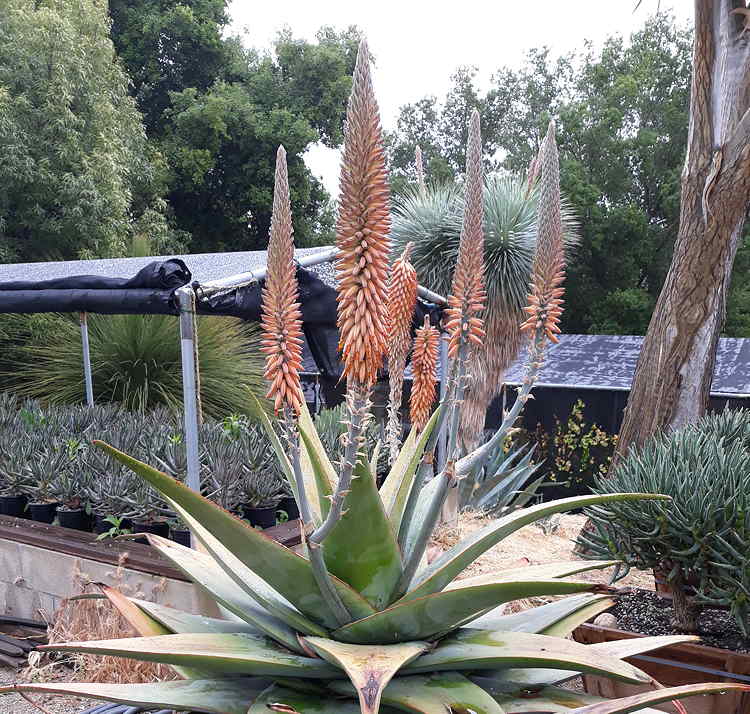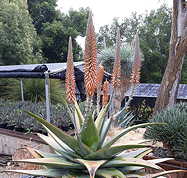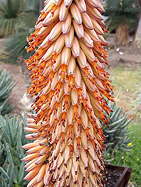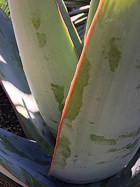This species was described in 1894 by Schweinfurth but with scant details. More than a century later it again came to the attention of students of the genus Aloe. Darrel Plowes recognized it as something unusual when he sent a couple of plants from Schweinfurth’s locality to John Lavranos who, some years later, flowered the plants in cultivation and determined them to be the long-lost A. schoelleri. Others have since found the locality in Eritrea and amplified the plant’s description. In dry conditions the leaves are gray-green and recurved with a purplish tinge. Well-watered plants in cultivation are greener and more erect but have distinctive, sharp, reddish margins with small, widely-spaced teeth. Flowering provides a somewhat muted display of pastel orange. However, the tall racemes make for convenient close-up viewing of the closely packed flowers revealing that the exserted stamens are of a brighter, more luminous orange than that of the petals. In nature the plant grows hanging from cliffs of the Amba Souara Gorge, at the edge of the Kohaito Plateau in Eritrea. It appears to be most closely related to A. rubroviolacea which occurs across the Red Sea in Yemen. Plants of A. schoelleri have now become available through the diligent controlled pollination efforts of father and son nurserymen Steven and Garrett Duey in Temecula using plants from seed sent by Lavranos to Gary James, explorer and master propagator in Costa Mesa, CA. Finally, through this circuitous chain of natural curiosity and careful cultivation this rarity can be made more widely available. Given the harsh climate of its native habitat, experiencing considerable rainfall, high winds, and low winter temperatures, it should prove a durable addition to succulent landscapes in the southwest US. HBG 136300. $15.

Published in the Cactus and Succulent Journal, Vol. 92 (2), Summer 2020


